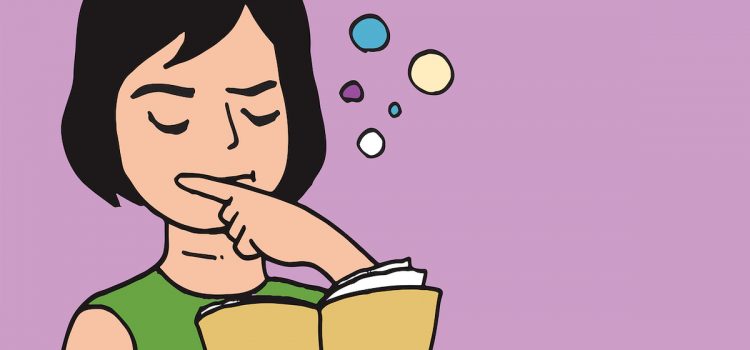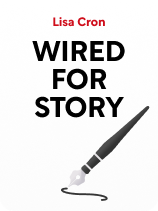

This article is an excerpt from the Shortform book guide to "Wired for Story" by Lisa Cron. Shortform has the world's best summaries and analyses of books you should be reading.
Like this article? Sign up for a free trial here.
How does a well-written story fill our need to understand the reasons behind everything? What does “Show, don’t tell” mean for writers?
In Wired for Story, Lisa Cron argues that our brains evolved to absorb information through stories. So, writers must write in a way that satisfies our brains’ expectations of story. This includes creating causal links that appeal to the brain’s need for cause-and-effect structure.
Continue reading to learn about the need for cause and effect in a story and how to achieve it.
Cause and Effect in a Story
Stories are about change, and conflict is what drives change. Showing how conflict leads to change requires us as writers to convey a clear pattern of cause and effect in a story. According to Cron, we have a neurological need to understand the reasons behind everything, which means our stories need to have a clear cause-and-effect structure on both the external plot level and the internal level of the protagonist’s choices. Things can’t just happen at random—rather, every action must have a reaction which then affects the next decisions the characters make. This establishes the logic of your story, which the brain needs to maintain interest.
(Shortform note: Story elements and events that appear at random will interfere with the cause-and-effect logic of your story, but it can be very tempting to use them because they can feel like great ideas or provide an easy way to weave in some other exciting element. However, if it doesn’t contribute to the overall story, it will fragment the narrative. The same applies to coincidences: One well-known story rule from Pixar is that, while it’s okay to use a coincidence to create conflict in your story, it’s cheating to use a coincidence to resolve conflict. However, some writers suggest that creating conflict with coincidence is also cheating, as it still fails to play into the larger cause-and-effect structure that’s supposed to establish the story’s logic.)
Taking this into account, what does “Show, don’t tell” mean? Cron points out that the maxim is commonly misunderstood to mean that we should avoid explicitly stating something—like the emotion a character’s feeling—and instead show them feeling it, by expressing it physically (through crying, yelling, smiling, and so on). However, she argues that what it really means is we need to show the cause-and-effect process that leads to that feeling. It’s not enough to say your character is angry. Rather, we need to see the event that made them angry, and we need to understand the internal thought process that caused them to react the way they did to the story’s events.
(Shortform note: Some experts do use “Show, don’t tell” to mean you shouldn’t explicitly state things in a story but should instead use things like action and sensory details to demonstrate them. They suggest that this creates a more immersive experience for the reader and results in a better flow.)
According to Cron, this cause-and-effect structure must be consistent throughout your story, which means that each scene will logically lead into the next one. The previous scene will catalyze the next scene, and the effects of the characters’ choices in the previous scene will determine the choices they make in the next scene. This also means your protagonist needs to change from scene to scene. They should feel differently at the end of the scene than they did at the beginning. By connecting all the scenes in your story in this way, you’ll create a cohesive, logical narrative that helps the reader understand the reason behind everything and satisfies their neurological need to simulate an experience they’ve never had.
| How to Implement Cause and Effect Cause and effect must play out on both the micro and macro levels for your story to maintain its logical structure. In other words, it should be clear on both the larger scale of the overall plot events and on the smaller scale of paragraphs or even sentences. In real life, it’s often difficult to identify the effects of something, and sometimes an effect becomes evident long after the cause occurs, but experts recommend that your writing should show an effect immediately after the cause, and the reader should always be able to clearly identify the cause-and-effect pattern. Some writers break down cause and effect into even smaller parts, suggesting that cause can be disassembled into 1) the goal your protagonist is working toward at the start of the scene, 2) the conflict that interferes with that goal, and 3) a disaster that represents a major failure for your protagonist in achieving their goal. This logically leads into a three-part effect, consisting of 1) the protagonist’s immediate reaction to the disaster, 2) a dilemma incited by the disaster in which there appear to be no good choices, and 3) a decision reached by the protagonist that will then lead directly into their goal for the next scene. Breaking cause and effect into smaller pieces might help you ensure that the character is changing from scene to scene. |

———End of Preview———
Like what you just read? Read the rest of the world's best book summary and analysis of Lisa Cron's "Wired for Story" at Shortform.
Here's what you'll find in our full Wired for Story summary:
- How humans have a neurological need for stories
- The formula that the human brain expects to encounter in a story
- How to build a protagonist that engages your reader






